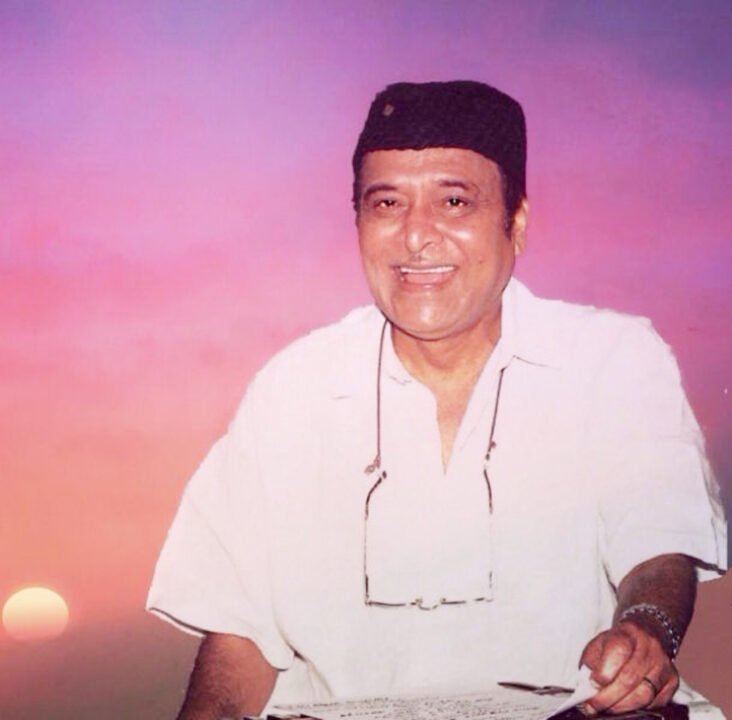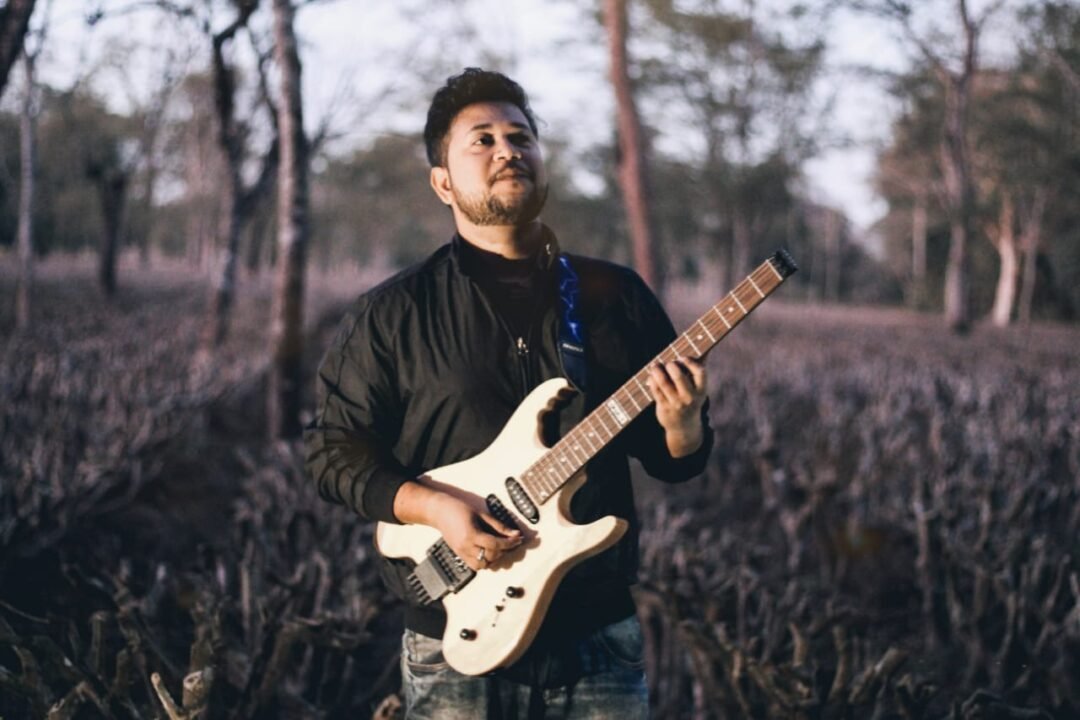By: Simanta Sarma
Bharigan is a form of folk drama prevalent among the various communities of Assam, especially in the regions of Kamrup and the southern part of Goalpara. Bharigan has gained immense popularity in the Pati Rabhas region, particularly in Kamrup, Goalpara’s Khamari, Manik Ganj, Chitukona, Chhotamatiya, etc. In regions like Bongaigaon, Dhubri, and the southwestern part of Goalpara in Meghalaya, Bharigan folk drama is performed in small quantities. There is no written information about the origin of this theatrical tradition. Bharigan has been transmitted through generations as an oral tradition. The musical compositions associated with Bharigan are also passed down orally, without any written records. Until now, there is no information about who composed these songs.
The main theme of Bharigan is primarily centred around the Ramayana. Within the narratives of Ramayana, stories like ‘Sita Haran,’ ‘Meghnad Badh,’ ‘Ram’s Exile’ (RamorBanabash), ‘Killing of Ravana’ (Ravana Badh) and “Lakshman’s Valor” (Lakshmanor Shaktishel) hold significant importance in this dramatic form. Although the stories are presented with depth, the narrative is occasionally interspersed with humorous and satirical elements, providing entertainment and laughter to the audience.
The prominent characters in Bharigan include Ravana, Mohiravan, Patramantri, Sarathi (Ravana’s charioteer), Ketuwa (Ravana’s associate), Hanuman, Sugriva, Jambuvan, Vibhishan, and Jatayu. Interestingly, the main characters of Ram, Lakshman, and Sita are not represented using masks; instead, they are portrayed by actors with painted faces. Deities like Goddess Kali, Shiva, Yamaraj, Vishwakarma, Buddha, Budhi, and Brahmin priests are also represented with painted faces. Another captivating aspect of Bharigan is the use of painted masks. One distinctive feature of Bharigan is the use of wooden masks. These masks, usually made of Wooden (bamboo), contribute to the overall charm of the performance. These masks are distinguished by their significant weight and are generally brightly painted with red and blue dominating the colour scheme. The group “Mul gaoriyan” comprising 35 members manages the Bharigan troupe. If a male member plays a primary role in the performance, he is referred to as ‘Mul’ whereas if a female plays a significant role, she is called ‘Mul.’ The ‘Mul’ has the responsibility of maintaining the narrative’s flow and controlling the overall presentation of the characters. The Bharigan troupe includes various instrumentalists, dancers, and actors, all of whom contribute to the vibrant enactment of the play. Bhari Gan not only showcases the cultural richness of the Rabha community but also serves as a means of entertainment, preserving the traditions and stories of the Ramayana in an engaging and vibrant manner.
‘ Top of Form””Bharigan’ is a form of traditional performing arts involving a group of people. This traditional art form, rich in cultural heritage, primarily emphasizes on music. In the realm of music, it presents mythological devotional songs in accordance with the scenes. The “Pali” consists of all the “Muls” (main controllers) connected with the performance and typically consists of ten to twelve members on stage. While the main controllers hold sticks, the Muls recite verses and initiate the performance. The leader of the Pali, also known as the “Mul” (main controller), starts the introductory part outside the stage while holding a stick. During the recitation of dialogues or songs by the characters, the performers remain outside, either cheering or assisting backstage.
In terms of rhythm, “Khol” (drum) and “Mridanga” a long double-sided drum and “Taal” a rhythmic instrument, accompany the narrative. The performance starts with the initiation on the “Khol” (drum) or “Mridang,” and during the recitation of dialogues, the characters are presented on the stage. Various episodes from the great epic Ramayana, such as the killing of Ravana, Lakshmana’s power, Sita’s trial by fire, and the slaying of Meghnath, are performed. Additionally, episodes from the Mahabharata, such as the lifting of Govardhan hill by young Lord Krishna, are also enacted.
Comic characters play a vital role in lightening the atmosphere during the performance. In Bharigan, only male performers engage in acting, while female characters are also portrayed by male performers. Female characters are not performed by women. Performances are often organized in open spaces or, more traditionally, in community areas following local customs and practices. To excel in acting, artists apply makeup resembling various characters from the Ramayana on their faces. The narrative is presented without any direct conversation; only acting is done. Body movements and dance are used to enhance the visual aspect of the performance. Puppets are used in storytelling, and sometimes, they are integrated with song performances to advance the narrative. The chief singer, known as “Mul Gaon Rian” plays a significant role. Performers wear a traditional costume, and sometimes, the lead singer adorns Rudraksha beads.
In the play Ravana Badha Sita Puri, the first thing to do is to get ready to play Bayan, Chali and give Haribal in the name of the Lord God. There is a prayer (bandana) at the end of the Joron Badi. At the end of the prayer, Ram and Lakshman enter and then the play begins, said Uchini Rabha, the chief leader of the Bharigan group. The play performed in the night continues overnight until dawn. This division of time for performance of Bhari Gan between day and night is quite distinctive and the Ramayana-based plays that are performed in the night are sometimes also called Ratir Gan, which means ‘the play of the night’. These Bharigan are two singers, two chali players, 8/9 pali players, 6/7 mask acting players and 10/12 dramatic players. Before the play, the masks are painted with sweet oil. Then the masks shine. Curd is churned during the day; Ravana is killed and Sita Puri is performed at night. Before the Bharigan drama begins, players are offered to the Lord. The prayer is….
“Nomo radhe hea kararmoh
Bipod bhanjandaya
O chilo narayan
Nomo radhikar moh
Nomo nomo Narayan hea….
Akhilerohkati
Nomo nomo radheaakaraman.”
A musical from the play Ravan Badh Sita Puri in the troupe of Uchini Rabha ….
“yuddhlogil ray…
tera mera vane yuddhlagil ray
yuddhlagil ray…
a…
hanuman kandhe chalil prabhu bhagwan yudh..
lagil ray… hay….”
When Ravana took Sita away, Rama went to Lanka with Lakshmana and along with Hanuman, Vibhishana, Sugriva, etc., defeated Ravana and killed him. Rama rescues Sita from Lanka. This song was sung on that subject. The ‘mul’ of the Bharigan troupe has created an atmosphere of spirituality by making Rama a God in the song.
In modern times, artists like Madhav Kandoli, Durgabari Ramayan, have popularized the Rama story through printed editions of the Ramayana in Assamese. The influence of Rama and Krishna worship is evident in the Bharigan performances. After the Khol, the song’s tune opens with the melodious voice of the lead singer in the Khuliya style. Following Khuliya, the lead singer uses hand movements, a handkerchief, or a scarf to create various mudras (gestures) during the recitation. The songs, accompanied by the beats of Khol and Mridanga, provide a devotional experience, and the ‘Pali’ and other artists contribute to this divine atmosphere. The performance ends with the audience being spiritually moved by the devotional aspect of the play.
“O’ Sarba shastra bijhari- hoy hoy
Name dui akhyar
Adi anta nai jar
Bed ogosor hea।।
O’ sita horonnat hoy hoy
Koribo prosar
O’ borhatuta dosh jen
Nodhara amarea ।”
(“O’ the seed of all knowledge – it happens, it happens
In two syllables,
the name No beginning,
no end It is the Vedas’ essence ।।
O’ the Seetha haran play – it happens, it happens
I will propagate
May the faults of Play
Not be found in us…”)
Bharigan’s akin to ‘Mul’ and ‘Ketuwai’ advance. The acting and dialogues of ‘Mul’ and ‘Ketuwai’ are crucial. In heavy songs, Mul or Ojhar’s guidance, characters perform dances illustrating stories. The main attraction of Bharigan performance is the heroic flavour it adds to the characters of Raja Maharaja and the battles between Ram and Ravana. In the context of Bharigan, there is a saying, ‘The charm of Bharigan should be felt by the listener, not calculated’. In the war between Ram and Ravana, A fierce battle takes place with arrows aimed at the haradhanu. From Ravana’s perspective, Ram shoots arrows, and so on. The inclusion of Kali Gossaini at the end of bharigan is significant. After the end of the Ramayana story, Kali Gossaini is portrayed as dancing with a skull in her mouth, representing the climax of the drama. With devotion to the illusion created by Kali Gossaini, a prayer is performed through dance.
The masks used in Bharigan are considered to be gifts from God and are treated with respect. They always worship the masks. The masks are kept in the form of gods in the houses of the group. Therefore, people nearby are afraid to come to the house of the leader of the group without taking a bath. The neighbours pass by the house only to serve. The masks used in the play are believed to be spiritual and new masks are used only after worshiping the goddess. When not in use, the masks are carefully kept at home. Earth lamps are lit regularly in the house. So that there are no obstacles, failures, etc. It is believed that masked spirits fight among themselves at night. They perform the above duties by sitting in the ketua and khulia bhauria in Bharigan. Bahuwa, Ketua and Dowari present serious characters to the audience with a sauce of worldly charm. For example, Hanuman burnt the golden Lanka with his neck and lost his home and garden and left the kingdom with his wife and after that, bharigan represents the heroic valour of the warriors, narrating how they successfully achieve their goals. At that time, various humorous elements are added, as in the following verse:
“Jaow goire bhaihat, aaji pe desh sari jaow goire।
Ea pole I anal pole I anla
Anla parar tiri
Korobar bandar aah I bhaihat
Ghar khan pella puri…. । “
(“Let’s go, brother, let’s go around the country today.
A pale brought pale brought
Anla is the wife of another
Somewhere’s a monkey comes to Brothers
The house is burnt down…”)
The stage for Bharigan is very simple, with no special settings. Bharigan performances take place on an open stage or “Khola.” In the past, traditional light sources such as Ariya and Mahata were used. However, in the present day, electric lights have replaced the traditional lighting system.Music plays an important role in the performance of Bharigan folk drama. Any emotion, such as emotions, is expressed through music. The instruments used in Bharigan are bartal, khamcharang, big drum, khol or mridang, tal and janghal or jhali.
Assam has a long and strong tradition of dance, drama and music. AnkiyaBhaona, Oja Pali, Dhuliya-bhaoriya, Khuliya-bhaoriya, Putala-nach Bharigan and Kushan Gan are a variety of dramatic and musical forms that enrich the performing arts tradition of the state. However, in the era of science and technology, the common people have become less addicted to these arts as well as the art of bharigan. Therefore, efforts have been made to restore the pride of this traditional art. The flow of Western music has reduced interest in the folk art. Folk songs related to spirituality, with knowledge of devotion, can attract people towards the traditional drama. The artists associated with the troupes are struggling not only for the survival of the troupe but also for their personal lives. As a result, enthusiasm for the art and self-confidence has diminished. To revitalize the art and increase economic stability, it is necessary for troupes to get support from various sources. The involvement of the younger generation is crucial for the future of Bhaṛigaan. Collaboration with the government and active participation in cultural events can help promote and preserve Bhaṛigaan. (The author is an Assistant Professor, Sualkuchi Budaram Madhab Satradhikar College, Sualkuchi)







